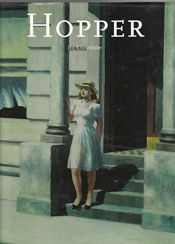Edward Hopper 1882-1967: Vision of Reality
Blurb
Edward Hopper - The loneliness of big-city peopleEdward Hopper (1882 - 1967) is considered the first significant American painter in twentieth-century art. After decades of patient work, Hopper enjoyed a success and popularity that since the 1950s have continually grown.
Living in a secluded country house with his wife Josephine, he depicted the loneliness of big-city people in canvas after canvas. Probably the most famous of them, Nighthawks, done in 1942, shows a couple seated quietly, as if turned inwards upon themselves, in the harsh artificial light of an all-night restaurant. Many of Hopper's pictures represent views of streets and roads, rooftops, abandoned houses, depicted in brilliant light that strangely belies the melancholy mood of the scenes.
Edward Hopper's paintings are marked by striking juxta-positions of color, and by the clear contours with which the figures are demarcated from their surroundings. His extremely precise focus on the theme of modern men and women in the natural and man-made environment sometimes lends his pictures a mood of eerie disquiet. In House by the Railroad, a harsh interplay of light and shadow makes the abandoned building seem veritably threatening. On the other hand, Hopper's renderings of rocky landscapes in warm brown hues, or his depictions of the seacoast, exude an unusual tranquillity that reveals another, more optimistic side of his character.

 English
English Español
Español Deutsch
Deutsch










Member Reviews Write your own review
Be the first person to review
Log in to comment